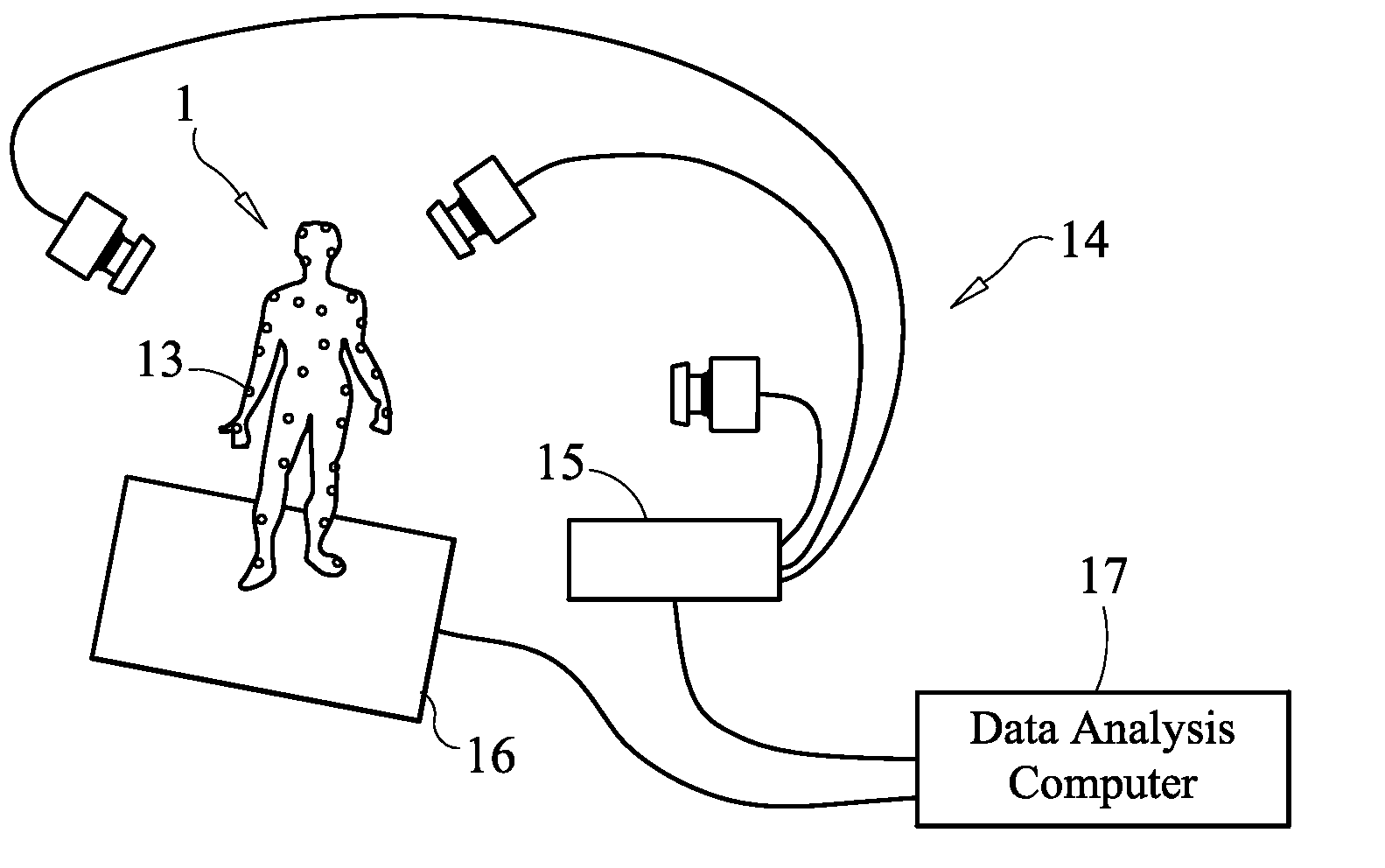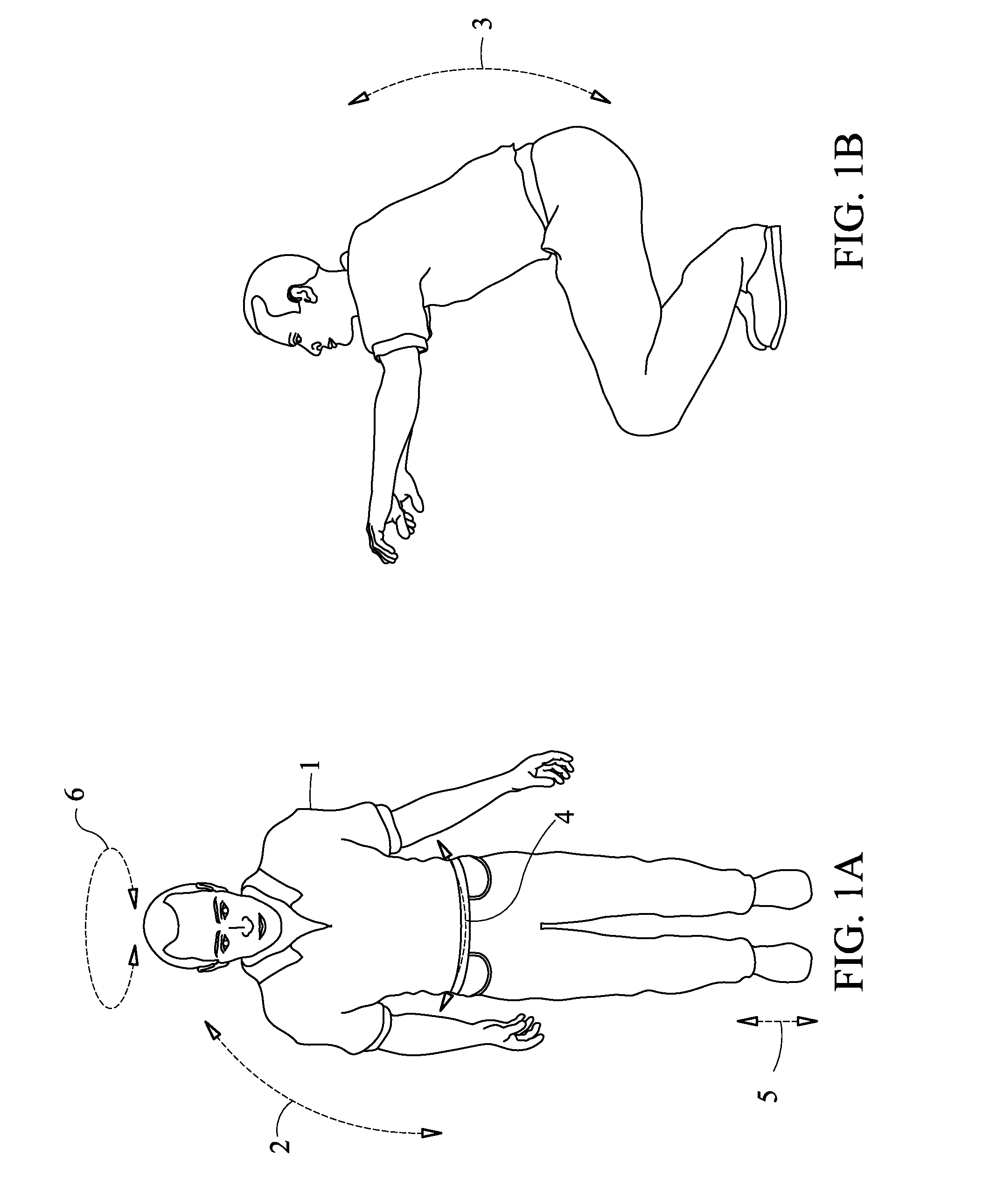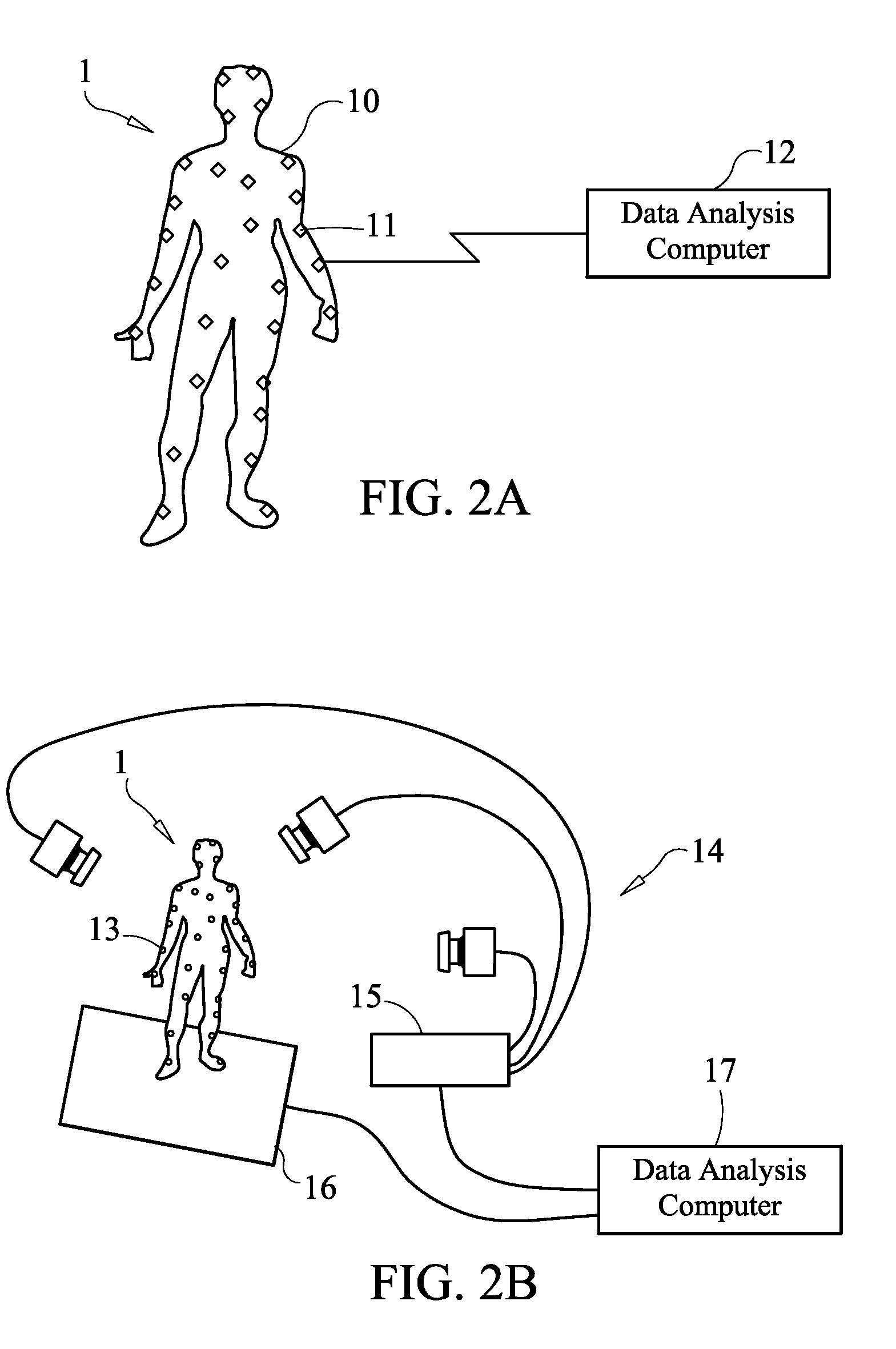Designation of a Characteristic of a Physical Capability by Motion Analysis, Systems and Methods
a technology of motion analysis and physical capability, applied in the field of design of physical capability characteristics by motion analysis, systems and methods, can solve problems such as limited routine exploitation of tools and techniques in this field
- Summary
- Abstract
- Description
- Claims
- Application Information
AI Technical Summary
Benefits of technology
Problems solved by technology
Method used
Image
Examples
example 1
Back Pain Assessment
In the case of back pain assessment, a set of subjects with known, varying degrees of impairment are tested.
With some clinical insight, a comprehensive set of motions are prescribed for subjects to perform while a comprehensive set of parameters characterizing those movements is collected. FIGS. 1A and 1B illustrate a person 1 and a variety of possible prescribed motions. For example, subjects may be instructed to bend in one or more specific directions 2, to stand from a sitting position 3, to twist body portions 4 at various rates, to walk normally, and turn or move various body parts 56. Motions might be repeated multiple times. Prescribed motions might comprise motions that are performed under load and those that are not loaded or with a different degree of load. Both motions that involve biomechanically open kinetic chains and those that involve closed kinetic chains might be used.
Those skilled in the art will recognize that there are many ways to collect hu...
example 2
Malingering Assessment
A second application example, also related to back pain, is a protocol for detection of malingering or “sincerity of effort”. Rather than result in a scalar index of back health this protocol produces a two-state classification of insincere / sincere effort or faking / not-faking within stated confidence levels. Following the teaching herein, a range of possible movements and measures of those movements were postulated and information regarding those particular factors was measured and analyzed for both actual back pain sufferers and for control subjects. One hypothesis of this assessment was that chronic back pain would result in a fairly consistent motion characteristic as the “point of pain” was entered in performing a prescribed movement. In other words, if a subject was asked to perform a task that resulted in back pain, he or she would experience it at the same point in the movement each time a task was performed. Furthermore it was also hypothesized that the...
example 3
Golf Performance Index
A sport performance example consistent with the principles taught herein is a “Golf Performance Index”. GPI score is a scalar rating of overall level of performance in a golf skill. One way to think about this is as a process for transforming data comprising a time-series of values representing human motions into an objective meaningful measure providing that person's golf swing rating. While learning a new swing a subject may be progressing steadily in their mastery of that new skill but in fact be producing erratic end-results. To coach or to self-coach, an objective measure of progress in learning that swing other than by ultimate outcomes can be valuable. Determining an overall figure of merit of a swing execution based on minimal measurements (for cost reasons and to reduce the intrusive instrumentation borne by the golfer) is desired. A figure of merit or rating achievement of a desired swing can give more valuable feedback to a student than the final out...
PUM
 Login to View More
Login to View More Abstract
Description
Claims
Application Information
 Login to View More
Login to View More - R&D
- Intellectual Property
- Life Sciences
- Materials
- Tech Scout
- Unparalleled Data Quality
- Higher Quality Content
- 60% Fewer Hallucinations
Browse by: Latest US Patents, China's latest patents, Technical Efficacy Thesaurus, Application Domain, Technology Topic, Popular Technical Reports.
© 2025 PatSnap. All rights reserved.Legal|Privacy policy|Modern Slavery Act Transparency Statement|Sitemap|About US| Contact US: help@patsnap.com



